Ceiling Fan Capacitor
₹234.00 Original price was: ₹234.00.₹195.00Current price is: ₹195.00.
What is a Ceiling Fan Capacitor?
A ceiling fan capacitor is an essential electronic component that plays a crucial role in the operation of a ceiling fan. Capacitors are devices that store electrical energy and subsequently release it when needed, helping to regulate the flow of electricity within the fan’s motor. The basic principle governing capacitors is their ability to store electric charge, allowing them to supply energy during specific phases of operation. This characteristic is vital for the effective functionality of ceiling fans.
There are two primary types of capacitors used in ceiling fans: run capacitors and start capacitors. Run capacitors are deployed to maintain the fan’s speed and improve its efficiency during normal operation. By supplying a consistent flow of electrical energy, they help ensure that the fan blades rotate smoothly and at the desired speed. This contributes to better airflow and overall performance, allowing users to enjoy the intended benefits of their ceiling fan. On the other hand, start capacitors provide the necessary boost of energy during the initial startup phase of the fan, ensuring that the motor achieves sufficient torque to begin spinning. Without start capacitors, many fans would struggle to start or require increased manual intervention.
The choice of capacitor can directly influence the performance of a ceiling fan. For instance, fans designed for larger spaces may need higher-capacity capacitors to maintain efficient airflow, while smaller fans can function adequately with lower capacities. Understanding the role of ceiling fan capacitors is vital for anyone seeking to optimize fan performance, whether through maintenance, replacement, or upgrading components. The effective management of these capacitors, combined with a proper understanding of their workings, ensures that ceiling fans operate effectively and efficiently in various environments.
Signs of a Failing Ceiling Fan Capacitor
Understanding the signs of a failing ceiling fan capacitor can help prevent potential inconveniences associated with defective fans. An array of indicators may suggest that the capacitor is malfunctioning, often leading to suboptimal performance of the ceiling fan. One of the most apparent signs is when the fan operates at an unusually low speed. If the fan intended to circulate air effectively begins to lag and doesn’t achieve its standard operational velocity, it could imply an issue with the capacitor.
Additionally, unusual humming or buzzing noises coming from the fan can also signify capacitor problems. A well-functioning fan typically runs quietly, producing minimal audible noise. However, a malfunctioning capacitor may result in erratic fluctuations in power supply, leading to these disruptive sounds. Homeowners should pay attention to these auditory cues, as they often serve as warnings of deeper electrical issues within the fan system.
Another critical sign of a failing ceiling fan capacitor is the complete failure of the fan to operate. If the fan does not respond at all when switched on, the capacitor may have reached its end of life. In such cases, troubleshooting is essential. The first step involves checking the power supply and ensuring that there are no blown fuses or tripped breakers in the electrical system. If everything appears normal but the fan remains inoperative, it may be time to inspect the capacitor.
For those uncomfortable performing electrical checks, consulting a professional is advisable. An electrician can accurately assess the situation, ensuring safety while providing necessary repairs or replacements. Recognizing these signs early can save time and expense, maintaining the fan’s operational reliability.
How to Replace a Ceiling Fan Capacitor
Replacing a ceiling fan capacitor is a task that can enhance the performance and longevity of your ceiling fan. Before beginning this process, it is essential to prioritize safety. Start by turning off the power supply to the fan at the circuit breaker, ensuring there is no electricity flowing to avoid any hazards. After securing the power, gather the necessary tools: a screwdriver, wire cutters, a voltage tester, and, of course, a replacement capacitor that matches the specifications of your ceiling fan.
To initiate the replacement, carefully remove the fan’s canopy cover using the screwdriver. This will expose the wiring and the capacitor. Utilize the voltage tester to double-check that the power is indeed off before proceeding. Next, take note of the existing capacitor’s wiring configuration. This step is crucial for correctly connecting the new capacitor later on. If required, you can draw a diagram or take a photograph to ensure accuracy.
Once you are comfortable with the wiring setup, disconnect the wires from the old capacitor. It is advisable to cut the wires if they are too short and cannot be removed easily, but ensure you leave enough length to work with when installing the new component. Next, remove the existing capacitor from its mounting in the fan assembly. Place the new capacitor in the same position as the old one, making sure it is securely fastened.
Now, connect the wires to the new capacitor following the configuration you previously documented. It is critical to ensure that each connection is tight and secure to prevent any electrical issues later. After verifying that all connections are correct, replace the canopy cover and restore power at the circuit breaker. Finally, test your ceiling fan to confirm that the capacitor replacement has been successful.
Preventive Maintenance for Ceiling Fan Capacitors
Maintaining the functionality and longevity of ceiling fan capacitors is essential for ensuring adequate performance and energy efficiency of ceiling fans. Implementing preventive maintenance strategies can significantly extend the lifespan of these vital components. One of the most straightforward measures is regular cleaning. Dust and debris can accumulate on the fan blades and the surrounding areas, potentially obstructing airflow and causing the fan to work harder than necessary. Regularly cleaning the fan and its components will reduce the risk of overheating, which can ultimately harm the capacitors.
Additionally, it is crucial to ensure adequate ventilation around the ceiling fan. Overheating can be detrimental to the lifespan of capacitors. When ceiling fans are enclosed or placed in a corner without sufficient airflow, the excess heat generated during operation can lead to premature wear and tear. Positioning the fan in an area with adequate clearance, as well as ensuring that air can flow freely around it, can help mitigate these issues.
Periodic inspections are another vital aspect of preventive maintenance. Checking for signs of wear, such as frayed wires or any discoloration around the capacitors, can help identify issues before they escalate into more severe problems. If any anomalies are detected, it is advisable to consult a professional for repair or replacement.
Moreover, preventing power surges is an essential consideration. Surges can occur due to lightning strikes or fluctuations within the electrical grid, posing a threat to the integrity of ceiling fan capacitors. Incorporating surge protectors into your electrical system can effectively shield your ceiling fan and its components from sudden voltage spikes.
Incorporating these maintenance practices not only enhances the performance of your ceiling fan but also contributes to the overall durability and reliability of its capacitors.
Frequently Asked Questions about Ceiling Fan Capacitors
Ceiling fan capacitors play a critical role in the functionality of ceiling fans, and it is common for users to have questions regarding their nature and maintenance. A frequent inquiry is about the lifespan of a ceiling fan capacitor. Typically, a well-manufactured capacitor can last anywhere from 5 to 10 years, depending on the usage and environmental conditions. However, factors such as voltage fluctuations and heat can significantly impact its longevity.
Compatibility is another vital aspect that users often wonder about; whether certain capacitors can be used with a variety of ceiling fan models. It is essential to understand that not all capacitors are created equal. Each capacitor is designed to work with specific fan models, and using an incompatible capacitor can lead to operational issues or even damage the fan. Therefore, consulting the manufacturer’s specifications is advisable when considering a replacement.
Another common concern relates to whether a capacitor issue can be repaired or if it necessitates a complete replacement. While some minor issues may be addressed with repairs, most capacitor failures require a full replacement to restore the fan’s functionality. A damaged capacitor usually exhibits signs such as irregular fan speeds or complete lack of operation, which means that self-repair is generally not feasible for the average homeowner.
Cost is often a significant factor when contemplating ceiling fan maintenance. The price of replacing a ceiling fan capacitor can range from $15 to $50, including the cost of labor if professional assistance is needed. Overall, understanding these common questions surrounding ceiling fan capacitors enhances homeowners’ knowledge and assures them of making informed decisions when issues arise.
| Ceiling Fan Brand Name | aco, ACTIVA, Aervinten, AGE, AIRDEC, AIRELEC, Airhill, AKSHARA FAN, Almo, ALVIS, AMJ, Anchor By Panasonic, Aparna, Astra, Athots, Atomberg, ATUL, BAJAJ, befunky, BERLIA STEELS PVT LTD, Bevel, Bison, Blue Me, blue sun, BlueBerry's, Brighty, Candes, CG, Chief Marshal, cojo, Cosas, Cospex, Crompton, dakshrup, DAWAR, DIGISMART, DRUMSTONE, DV NOVAKING, EAGLE, ecotejas, Elevea, Elixxeton US, Emflux, Enamic UK, Engarc, Eskon, Eurostar, EVEREST, fest forever, Flipkart SmartBuy, FOUR STAR, GESTOR, GM, good choice, GRANTON, Halcyon, HANEUL, HANS LIGHTINGS, HARMAN INDUSTRIES, HAVELLS, HAWAFANS, Herrricane, Hi Choice, Hindware, IMPEX, Indigo, INNO ONE, Kanishka, Kenstar, kenvi us, Khaitan, Kimatsu, KOI, KUHL, KWW, kysa, Lalson's, Lazer, LionBolt, Longway, LONGWINGS, LUKER, LUMINOUS, Luton, luxer, MAKE LIFE BETTER, MARC, Max Speed, Maxotech, MAYA, MinMAX, MODI, Mokshi, Moonstruck, MOVIE STARS, NAVDEVI, Nex, oceco, OMEGA'S, OMEN, oremate+, oreole, Orient Electric, ORPAT, Orzinpro, OSTN, ottomate, Panasonic, Paras Green, Polar, Polycab, PROLIFE, QUALX, Raptas, RediGo, Relaxo, Revolta, Rhobos, RPM, RPM Airtech, Sameer, Sampri, Sansui, SATYA SUNDER, saveguard, SHATAK, SHIFY, silver king, Singer, sm luxury, Smuf, STANDARD, STAR JIVA, Stardom, STARSHINE, Summercool, SUMMERKING, Sun Flame, Sunflame, SUNGOLD, suniore, Superfan, SURYA, Sword, TechKing, THERMO KING, THERMOCOOL, TIFOZ, ULTICA, UltinoPro, UNIFAN, Urja Enterprise, USHA, V-Guard, vandana, ventum, Venus, VG, Vilaxo, vindian, VISRA, Voltcare, VRS, Willett, Xpert, ZENTAX, zigma, ZORIX, Zunpulse, ZunVolt |
|---|
Only logged in customers who have purchased this product may leave a review.
Related products
-
Ceiling Fan Parts
Ceiling Fan Regulator
Rated 0 out of 5₹546.00Original price was: ₹546.00.₹455.00Current price is: ₹455.00. Select options This product has multiple variants. The options may be chosen on the product page -
Ceiling Fan Parts
Ceiling Fan Light Kit
Rated 0 out of 5₹3,120.00Original price was: ₹3,120.00.₹2,600.00Current price is: ₹2,600.00. Select options This product has multiple variants. The options may be chosen on the product page -
Ceiling Fan Parts
Ceiling Fan Motor
₹1,560.00 – ₹2,160.00 Select options This product has multiple variants. The options may be chosen on the product pageRated 0 out of 5 -
Ceiling Fan Parts
Ceiling Fan Remote Control
Rated 0 out of 5₹1,248.00Original price was: ₹1,248.00.₹1,040.00Current price is: ₹1,040.00. Select options This product has multiple variants. The options may be chosen on the product page

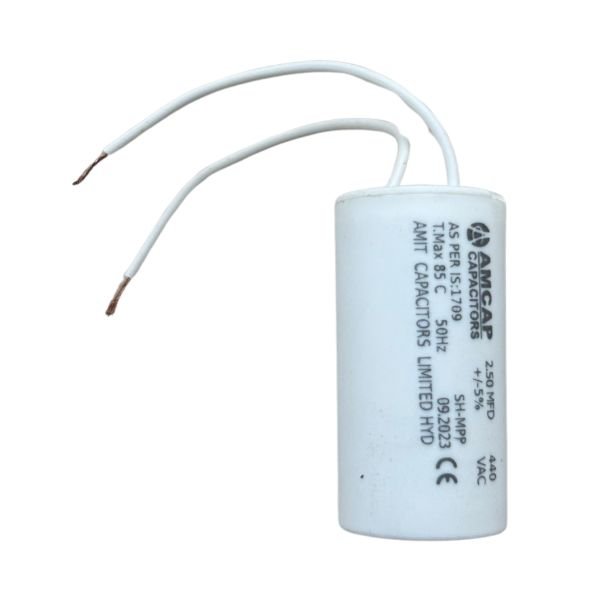
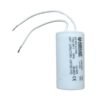
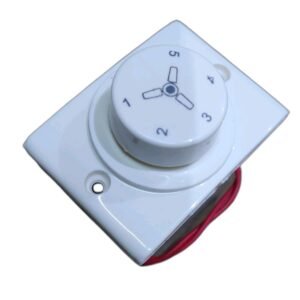
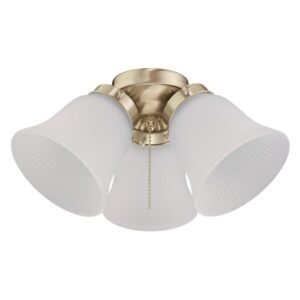
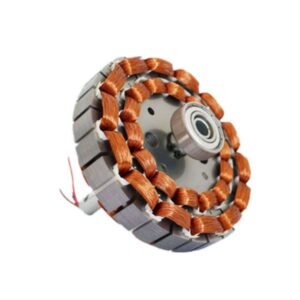
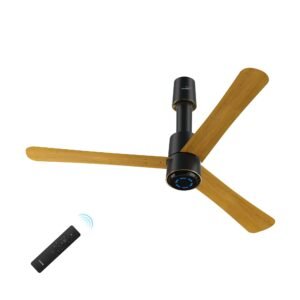
Reviews
There are no reviews yet.